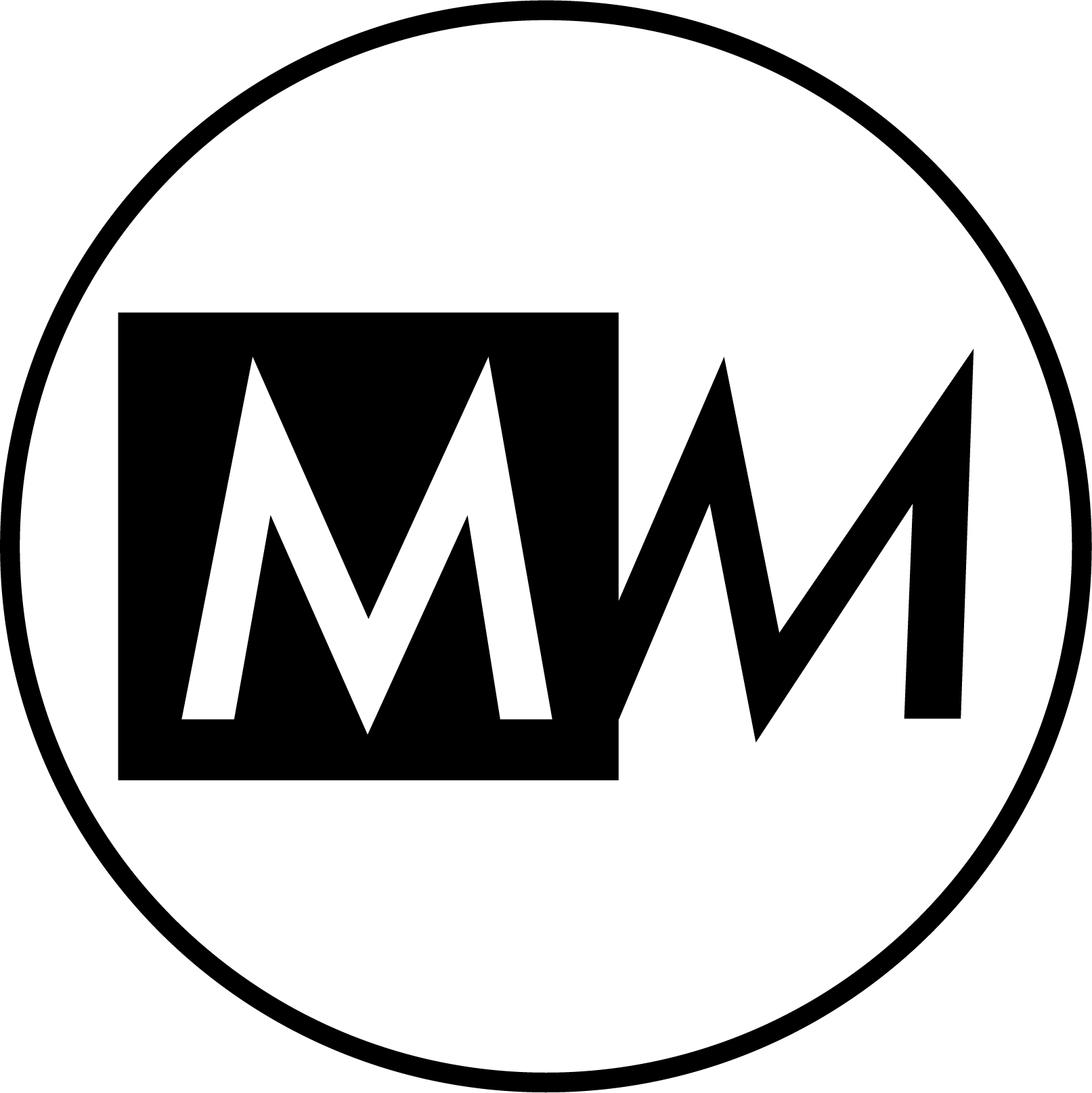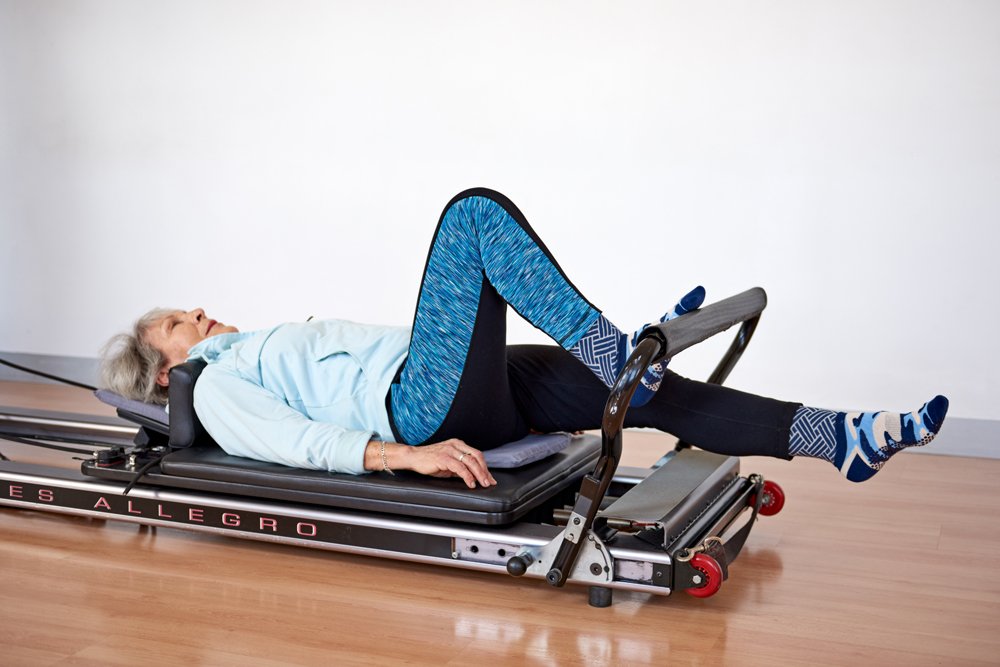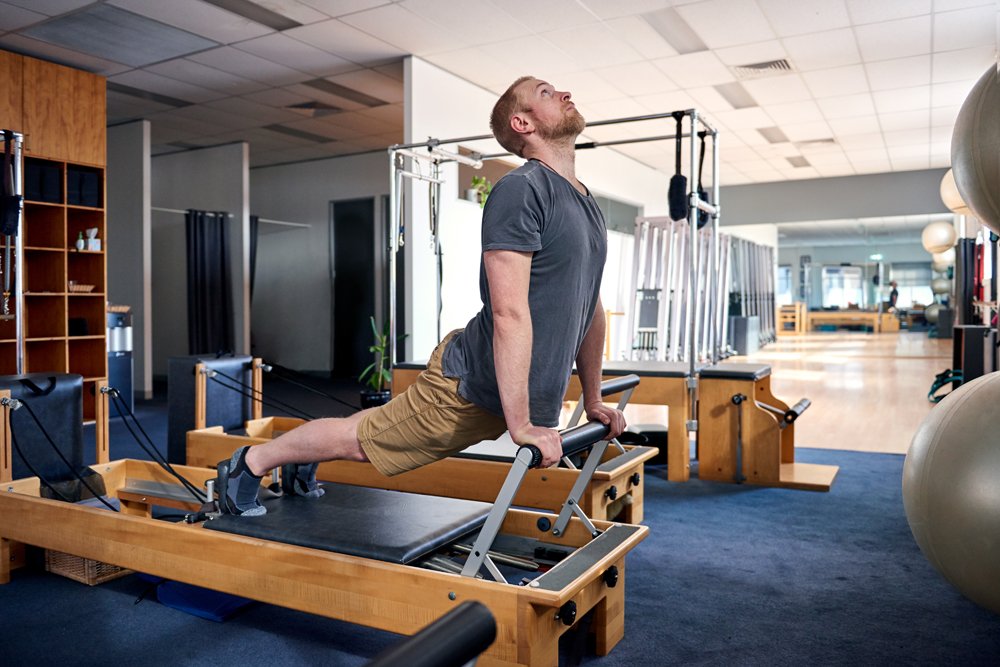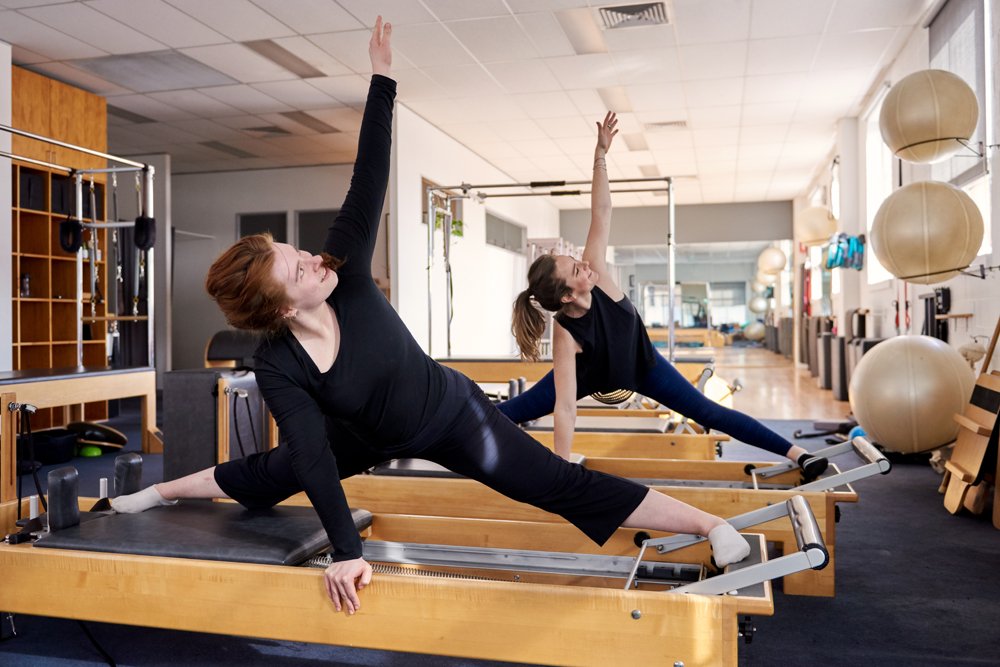Reformer Pilates for Beginners
Let KB answer all your questions about joining Reformer Pilates for the first time
My first Reformer Pilates experience was as a graphic designer in South Korea. Every night after work I would pass by a Pilates studio and notice the clients pushing and pulling and jumping on a weird looking machine. My first impression of this imposing machine device (that I would later find out to be a Reformer) was that I would never be able to use it to better my posture/fitness as it seemed so difficult and intimidating to use. But with constant back complaints and sitting at a desk all day, I decided to give it a go anyway.
It was not nearly as bad as I thought. The instructor went through the machine and explained how everything worked and explained all the right things that proved so important for my first experience. Fast forward to now, 7 years deep into using and teaching Pilates on the Reformer, I’ve written down the key points and observations that I’ve found to be helpful and would like to share.
Is Reformer Pilates suitable for beginners?
Yes! It’s excellent whether you are young or old, recovering from injuries or even if you just wish to be more physically active. Pilates on the Reformer works on your muscle endurance, joint stability, muscle strengthening, balance, co-ordination and whole lot more in a safe and low impact way. The proof is in the results, with thousands of studios dedicated purely to Pilates on the Reformer opening across the world in the in the last 20 years, and most participants are genuinely surprised at what they can achieve.
What are the differences between Reformer and Mat Pilates?
Mat Pilates is a floor-based workout mainly using your own weight and gravity. The main difference between Reformer and Mat Pilates would be the spring system and resistance exercises. The Reformer apparatus may initially look a little scary and resemble somewhat of a torturous device, however it is practical, functional and easy to use. The Reformer has a lot more opportunities to vary the Pilates exercises, by using different resistance springs which either provide extra support or makes exercising more challenging. But the foundational principles of Pilates such as breathing, centering, control, fluidity and precision still applies regardless of whether you’re on a mat or a reformer, and is what makes these forms of exercise Pilates.
Coming out of an injury?
The Reformer apparatus is a great for rehabilitation. If you are recovering from a knee or hip injuries, setting up the machine on the right measurements will give you the best support to work on a specific area using the resistance of the spring. As you become stronger, you can manipulate the spring settings so you can improve strength and mobility without loading into unnecessary joints. It also allows you to blend exercises so that it can work the whole body at once – this is essential in rehabilitation, so that the injured area properly reintegrates with the reflexes of the body, rather than having to think about it all the time.
How often should I do reformer Pilates?
As Mr Joseph Pilates recommended, 3 times a week would be most ideal. This was based on his vision of Pilates being the best and only form of exercise the modern-day society would need. However even once a week can be greatly beneficial for those who already are quite active, and twice a week is good for those who only do 1-2 other things during the week that challenge their strength and heart rate.
Are all Reformers the same?
Depending on the model/brand they may vary slightly but they all follow the same basic design. Think of them like a car – there are many different makers and designs, but they generally all come with the same basic components such as wheels, somewhere to sit, windows and doors. Similarly, Reformers will generally all come with a head rest, straps with ropes, a moving carriage, an adjustable foot bar and different strengths of resistance springs.
Some Reformer exercises for beginners
Footwork: one the most fundamental exercise in Pilates. It involves you lying on your back and repeatedly pressing in to the resistance with your legs, and changing foot positions regularly – amazing for leg and foot strength. You can expect to learn this exercise in your first session and be prepared for an entire leg workout. As an instructor, I am still finding there is so much to explore, as I find I am still learning something new constantly.
Hands in straps: in this exercise, you are still lying on your back but your hands on to straps attached to ropes and your feet are in the air. The straps that pull the carriage up and down, and you can move your legs too. I call this the synergy exercise as it combines breathing coordination to deep abdominal muscles, working arms and legs all at the same time. After this one, your muscles will be singing.
Lunging: the word lunge may send spikes of fear through your soul, but on the Reformer they can actually be almost enjoyable. The carriage moves to support you, and you can add in different positions to focus more on stretching the hips, or add in upper body and head movements to challenge your balance. It’s still going to challenge your leg strength, but challenging your body is the whole point of any exercise.
Stretching
Another unique function that Reformer Pilates specializes in. Initially, sessions are likely to separate stretching exercises from the strengthening work, so expect to get some lovely stretches in between exercises or towards the end of the class for a well-balanced session. But as you get stronger, the goal is to find the stretch within each exercise, so that you are developing your strength throughout the full range of movement in the targeted joint area. With this is mind, you will start to feel longer, lighter and may even transform your posture.
Things to know before your first Reformer class?
- Safety first. The machine is made of different moving parts so listen to your teacher for instruction. Within a few classes you should be much more confident to take charge of your machine.
- It is not typically a cardio workout. There may be a few exercises that will get the heart rate going, however, generally it’s not designed to be an aerobic exercise. Many people add a cardio-based training session in alongside of their Reformer Pilates routine, while some studios even blend cardio work with reformer classes - these are very hard but you can also experience some great changes in their body.
- Appropriate attire. Nothing too lose or baggy, as sometimes you may find yourself in a foreign position with your tops of bottoms revealing a bit more than you’d intended!! Also wearing non-slip (grippy) socks can be advantageous as it will give you more traction on the Reformer bed, particularly if you’re prone to sweat on your feet.
How many people are typically in a group Reformer class?
It ranges from business to business. But if you’re new, it would be best to find a class that has a maximum of 6 people. As you get more confident, then you could look to join bigger sessions, but ideally you’d still want a maximum of 8 in a class so the instructor can maintain constant interaction and remain hands on with each participant. There are some businesses that have 12+ in a class which is fine if you’re very confident and don’t have any injuries, but it’s really not a great place to start out.
Why we love Reformer Pilates:
The Reformer bed is the most recognizable/versatile apparatus in the Pilates world. And besides, it’s like getting on a new toy when you’re first starting. I mean, who doesn’t like sliding, pulling and lunging and jumping without even noticing you are actually doing wonders to your body!




